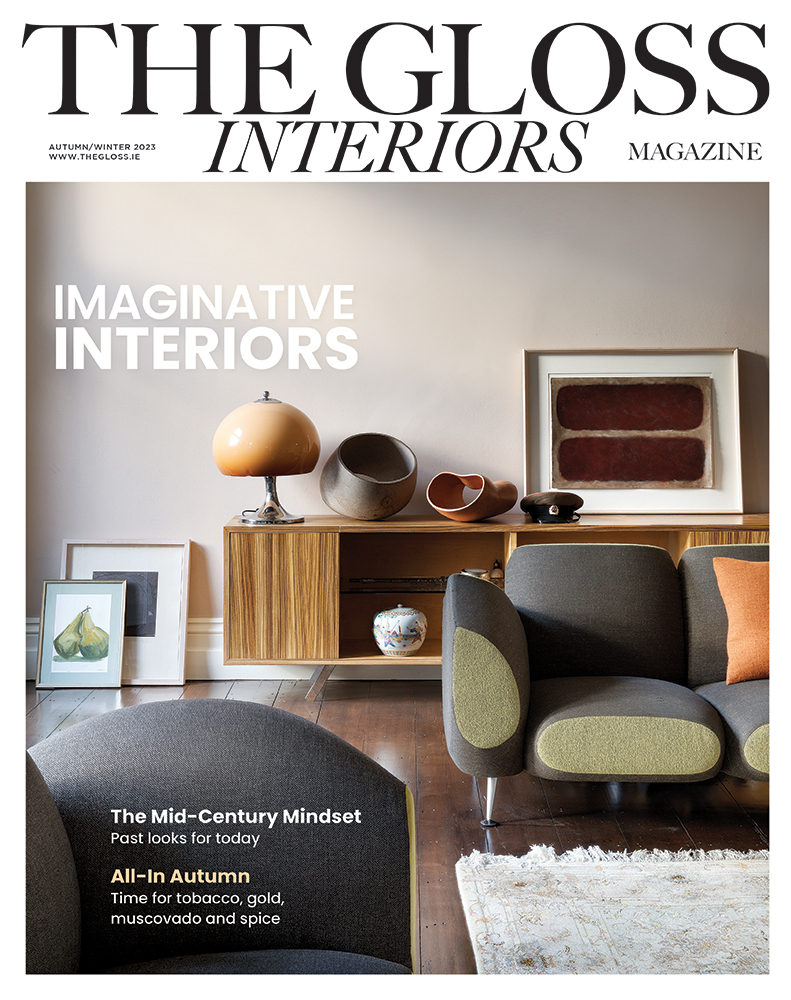As a Mexican-Irish American Alicia Reyes McNamara’s work explores identity and the potential of things to transcend definition. Her new exhibition at Lismore Castle Arts, Co Waterford, was inspired by the folklore and rituals around loss
Your new exhibition “Conduit’s Call” is multifaceted with a special installation piece, new sculptures and paintings. What was your starting point?
My starting point was exploring rituals around loss, mourning and healing on the digital archive at the National Folklore Collection through the University College Dublin. This is an incredible resource of folktales from all over Ireland, many are handwritten from the late 1930s. Through this research I found out more about keeners, who were commonly women, that would cry and sing at funerals to help guide the deceased’s soul and family through the process of passing. I became interested in exploring them as liminal figures that inhabit a borderless existence between life and death.

And the significance of the title …
“Conduit’s Call” comes from the viewing the keener as a spiritual conduit who called for collective grief with her embodied voice to help guide those who have experienced loss, as well as those that have passed to transition into a safe after life.

Tell us about the special floor work you have made for the exhibition space …
In my research, I often found that the women who were keeners were also usually the midwives of the community, those that guide the spirit through the transitions of the body. They would guide a person in and out of this physical world. During a funeral, keeners would call to the deceased’s family to express their love and frustrations with the dead. She would give space to all the complex emotions that come with grief. These women carried the intellect and technology of what a body needs emotionally and physically through life-changing transitional periods. This was an unbelievably powerful position to hold, so I was not surprised that the suppression of keening can be traced to the post-Reformation period of the Roman Catholic church. Keening was banished in the 16th century because it was said the priests were the only ones that could guide a person’s soul to the heavens. Folklore then tends to punish the keener for her knowledge and spin her into this wild, crazed woman often linked with the banshee figure rather than seen a self-possessed powerful woman.
Being conscious that the show would be in a former church, St Carthage Hall, solidified my desire to subvert the space further and dedicate it to these amazing women. The floor piece is supposed to walk through the path of a spirit that is released from the body and called through the keener’s cry to the afterlife – in many folktales, the spirit is reabsorbed into a womb to await rebirth. The floor piece is supposed to guide the viewer through that process.

Where and how do you work?
I work within my studio in London and create pastel drawings that then inspire my paintings.
You have an interesting heritage, where do you call home?
Though I live in London I think home will always be Chicago, where my parents are and where I grew up. It’s an interesting question I think that relates deeply to the show because in my research I found how keening can be practised to lament a diaspora, for those that had to leave home.

Need to Know: “Conduit’s Call” by Alicia Reyes McNamara, curated by Berlin Opticians Gallery, opens at St Carthage Hall, Lismore, Co Waterford on July 25 – September 12; www.lismorecastlearts.ie
LOVETHEGLOSS.IE?
Sign up to our MAILING LIST now for a roundup of the latest fashion, beauty, interiors and entertaining news from THE GLOSS MAGAZINE’s daily dispatches.









